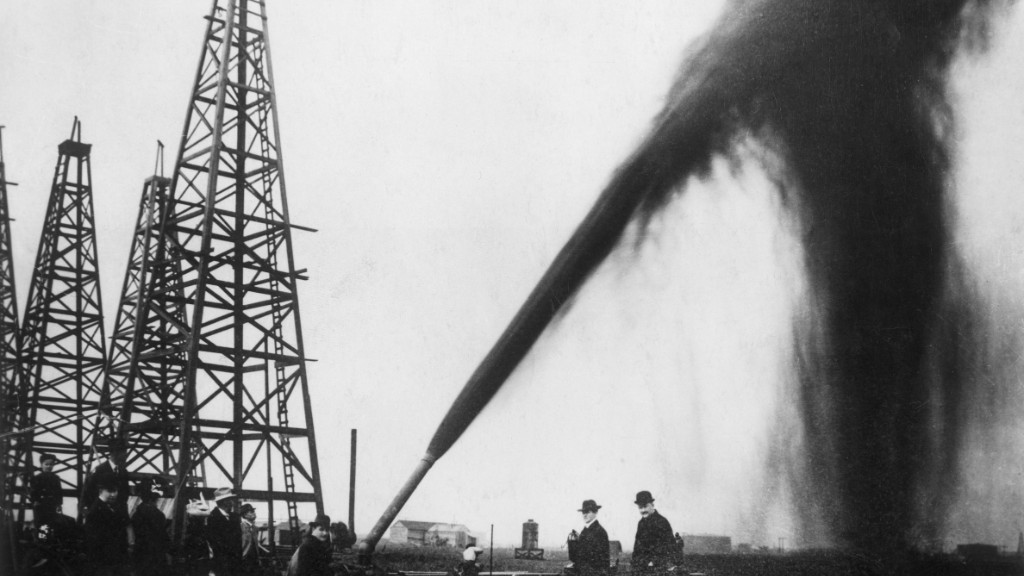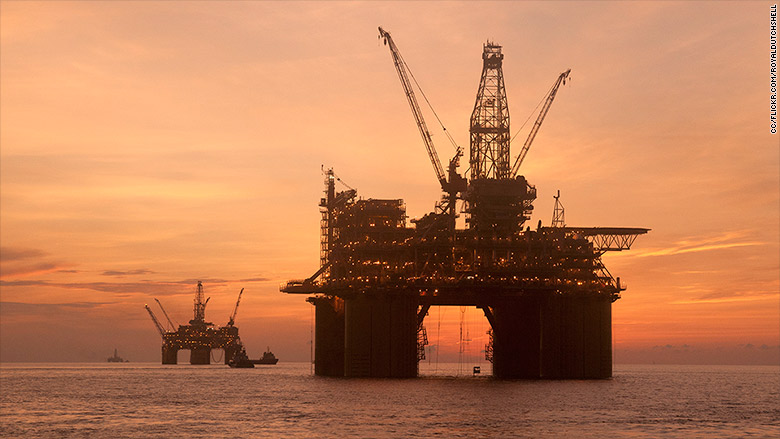
It looks like the Gulf of Mexico didn't get the oil crash memo.
U.S. oil production in the deep waters of the Gulf of Mexico is on the rise and on track to reach a record high in 2017, according to the Energy Information Administration.
That's despite the enormous costs associated with drilling for oil at depths of nearly two miles and the dramatic decline in oil prices that has caused overall U.S. oil output to decline in recent months.
But deepwater projects require enormous lead times, making them far less flexible than shale oil fields -- some of which have been shut down due to cheap oil. By comparison, many of the Gulf of Mexico's newly-completed projects and those in the works were discovered and planned years before the oil crash.
"If you've already spent $5 billion on a $7 billion project, it's not like you can say, 'Never mind, let it sit and wait,'" said Tom Kloza, global head of energy analysis at the Oil Price Information Service.
In 2010 the Gulf of Mexico was the scene of the BP oil spill, which has been called the worst environmental disaster in U.S. history. The disaster resulted in the deaths of 11 rig workers and caused an estimated 4.2 million barrels of oil to spill into the Gulf. In the aftermath the U.S. placed a moratorium on deepwater drilling for several months.

Related: What crash? U.S. oil production hits 43-year high
But oil production in the Gulf of Mexico is robust today. Output is expected to jump by 8% in 2016 and then by another 10% in 2017 to an average of 1.83 million barrels per day, according to the EIA.
This new supply from the Gulf of Mexico is offsetting U.S. production declines elsewhere, deepening the huge supply glut pressuring the oil markets.
For instance, next year Shell (RDSA) is expected to launch a deepwater Gulf of Mexico project that will pump oil from depths of 9,500 feet. The field, dubbed "Stones," was discovered in 2005 when oil prices were sitting at around $60 a barrel and Shell gave it the green light in 2013.
Shell expects peak production of 50,000 barrels of oil in the first phase of development and the Stones field is expected to contain more than 2 billion barrels of oil.
Last year Shell opened three other deepwater Gulf of Mexico project, including one called "Perdido" that is drilling 9,280 feet deep. ExxonMobil (XOM), Anadarko Petroleum (APC), Noble Energy (NBL) and LLOG Exploration have all launched Gulf of Mexico projects in 2015.
"These projects were planned back when prices were $100 a barrel. They are coming to fruition though as oil prices have cratered," said Matthew Smith, director of commodity research at ClipperData, which tracks global crude shipments.
Related: Oil crash sends Canada's unemployment to 3-year high
There are at least six deepwater Gulf of Mexico fields scheduled to launch this year or next, according to the EIA. In addition to Shell's Stones, there are shallower projects in the works from Noble, Anadarko, LLOG and Freeport-McMoRan (FCX).
It's not clear how many projects will be profitable in the current environment of sub-$40 oil. The challenges and dangers involved with deepwater drilling requires heavy investment. However, the costs of manpower and drilling services have fallen steeply since mid-2014 amid the downturn.
"They probably lose money on them, but they'd lose more if they weren't pumping oil at all," said Kloza.


